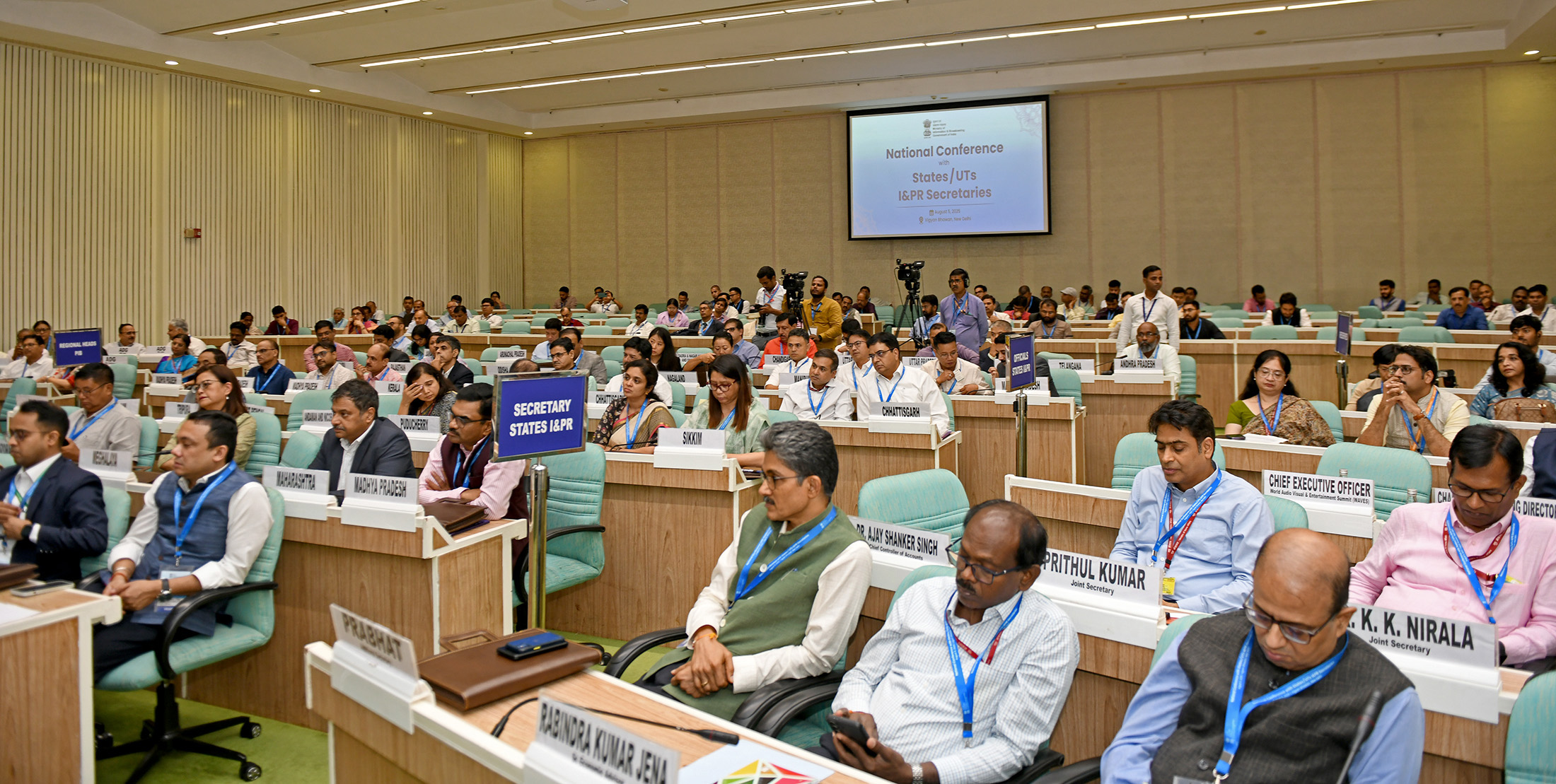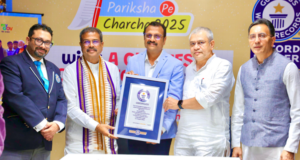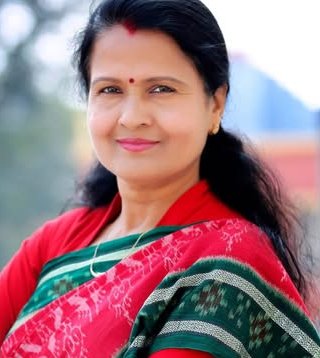Newdelhi:5/8/25:The Ministry of Information and Broadcasting hosted a high-level Conference with State and Union Territory Information & Public Relations (I&PR) Secretaries on August 5, 2025, at Vigyan Bhawan, New Delhi. Union Minister of State for Information and Broadcasting Dr. L. Murugan, Secretary, Information and Broadcasting Shri Sanjay Jaju, and other senior officials addressed the conference. The Conference aimed to strengthen Centre-State coordination in public communication, ensure full-scale implementation and functionality of Press Sewa Portal and India Cine Hub, and explore collaborative opportunities for developing film infrastructure and promoting India’s creative economy across regions.
Media Reforms and Expanding India’s Creative Economy
Addressing the Conference, Union Minister of State for Information and Broadcasting Dr. L. Murugan said that the Indian Cinema Hub portal has been revamped into a unified single-window system, offering streamlined access to filmmaking permissions and services across India. With GIS features and common forms, it supports ease of doing business and showcases India’s film-friendly policies under the leadership of Prime Minister Shri Narendra Modi.
The Minister also highlighted grassroots cinema initiatives that empower women and local communities through low-cost theatres. He emphasized major global events such as WAVES 2025 and IFFI Goa, attract global talent, boost India’s creative economy, promote cultural diplomacy worldwide and empower creative minds of tomorrow.
He placed special emphasis on the recently launched Indian Institute of Creative Technology (IICT), which aims to skill youth in animation, gaming, music, and other creative fields, highlighting the Government of India’s efforts to boost the creator economy in the country.
Collaborative governance for media advancement
During the event, I&B Secretary Shri Sanjay Jaju emphasized the vital role of Centre-State collaboration in effective communication and media development. He highlighted the rise of digital creators, vernacular media and the need to empower district-level I&PR setups. He urged all states to integrate with the Press Sewa Portal for smoother publication processes and flagged concerns over disjointed responsibilities in media departments across states.
Shri Jaju also highlighted the economic potential of cinema and content creation, stressing the need to expand beyond metros and support local talent. Initiatives like India Cine Hub were introduced to promote filmmaking and enable creators to monetize content. He termed the WAVES Summit a global movement and announced plans for a Radio Conclave during IFFI in Goa to deepen dialogue and cooperation across the media ecosystem.
Key focus areas:
One of the major focus areas of the Conference was sensitization and onboarding of the concerned officers of the State and UTs on the Press Sewa Portal. Developed by the Press Registrar General of India under the Press and Registration of Periodicals Act (PRP Act), 2023, the portal was a single-window digital platform that facilitated registration and compliance processes related to periodicals.
Another key highlight was the emphasis on revamped India Cine Hub Portal, which went live on 28 June 2024. This portal now functions as a single-window system for film-related facilitation across India, offering integrated access to filming permissions, incentives, and resource mapping at the Central, State, and local levels. Seven States and two UTs had already completed full integration, while twenty-one States and six UTs had been onboarded through a Common Application Form.
The India Cine Hub portal supported GIS-based location mapping, crowdsourced content from industry professionals, and differentiated workflows for filming, non-filming, and incentives. The conference discussed processing of applications and contributing verified data to improve India’s appeal as a global filming destination.
The promotion of low-cost cinema halls in underserved areas was also discussed at the Conference. Despite India being one of the highest producers of films globally, access to cinema infrastructure remained uneven. The Ministry proposed the development of modular and mobile cinema models to serve Tier-3 and Tier-4 towns, rural regions, and aspirational districts.
The conference discussed how to identify low screen density zones using GIS mapping, repurpose existing public infrastructure, streamline licensing through single-window systems, and offer tax and land policy incentives to attract private investment in affordable cinema infrastructure.
Participation in major film and content platforms like the International Film Festival of India (IFFI) and WAVES Bazaar also featured in the deliberations. States and UTs were encouraged to use these platforms to showcase their filming locations, promote regional incentives, and support local talent. The 55th IFFI saw participation from 114 countries, and the associated WAVES Bazaar hosted over 2,000 industry delegates from 30 countries. States could leverage these opportunities by setting up dedicated pavilions, facilitating entries to Indian Panorama, and nominating creative talent for global exposure.
Another major area of discussion was the development of India’s live entertainment economy. The conference deliberated with States regarding utilising existing sports and cultural infrastructure for events, integrating permission workflows into the India Cine Hub, appointing nodal officers, and establishing policy and fiscal support for investment in live entertainment infrastructure.
This high-level interaction aimed to reinforce cooperation in media, communication, and creative economy development, contributing to India’s progress as a digitally empowered and culturally vibrant society.
 Odisha news today, Latest Oriya News Bhubaneswar Online Odia news Portal
Odisha news today, Latest Oriya News Bhubaneswar Online Odia news Portal





